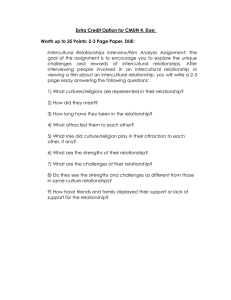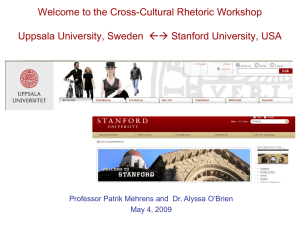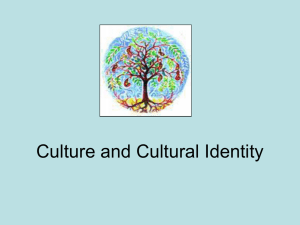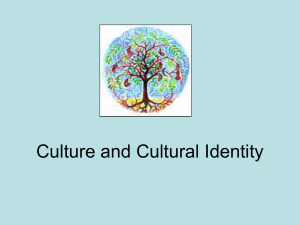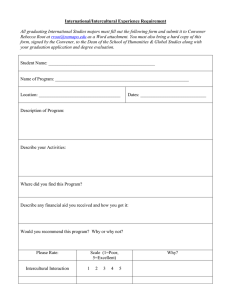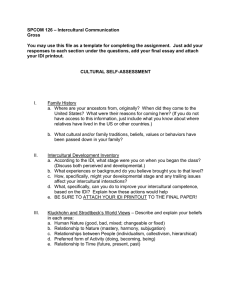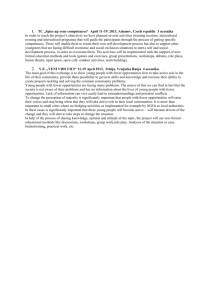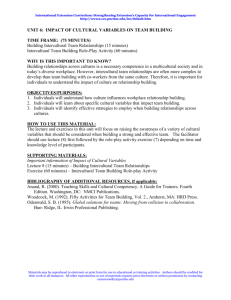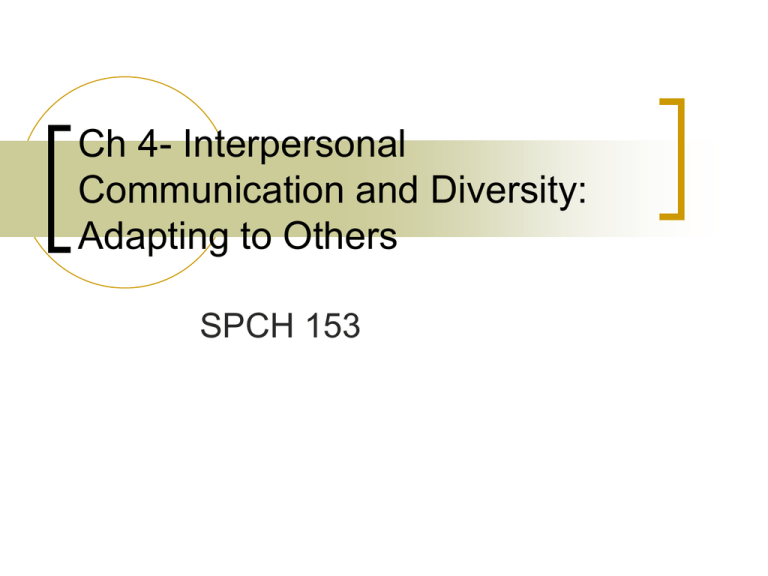
Ch 4- Interpersonal
Communication and Diversity:
Adapting to Others
SPCH 153
Diversity is a Value
It is inevitable.
Differences are valuable and
productive.
Core of the “American way”
Describing Differences
Sex and Gender
Sexual orientation
Race and ethnicity
Age
Social class
Religion and values
Political orientation
Geographic location
Language spoken
Education
Generation
Family background
Personal tastes
Any other self
identifying
characteristic
Changing Face of the Nation.
439 million people by 2050
Minorities will be majority by 2042
African-American and Asian populations will
increase 60%
Hispanic population will triple.
By 2023- More than half of children born will
be of a minority
Working age will be majority minority
65 and older be 20%
Understanding Culture
Culture- Learned system of
knowledge, behavior, attitudes, beliefs,
values, and norms shared by a group
of people.
Influences world view.
Divides into many subcultures.
Cultural relativity
Six dimensions.
Six Dimensions of Culture
Individualism vs. Collectivism
High vs. Low Context
Masculine vs. Feminine Culture
High and Low Intolerance of
Uncertainty
Centralize and Decentralized Power
Long and Short Term Time
Barriers to Intercultural
Communication
Ethnocentrism
Different communication codes.
Stereotyping and prejudice
Assuming similarities
Assuming differences
Improving Intercultural
Communication Competence
Develop knowledge.
Develop motivated.
Develop skill.
Become other oriented.
Adapt communication.

